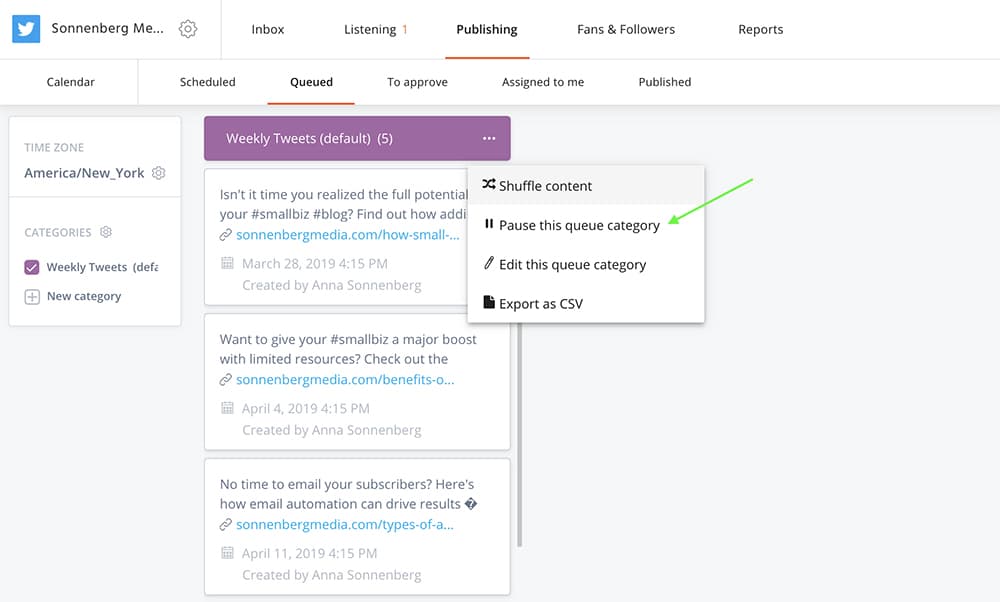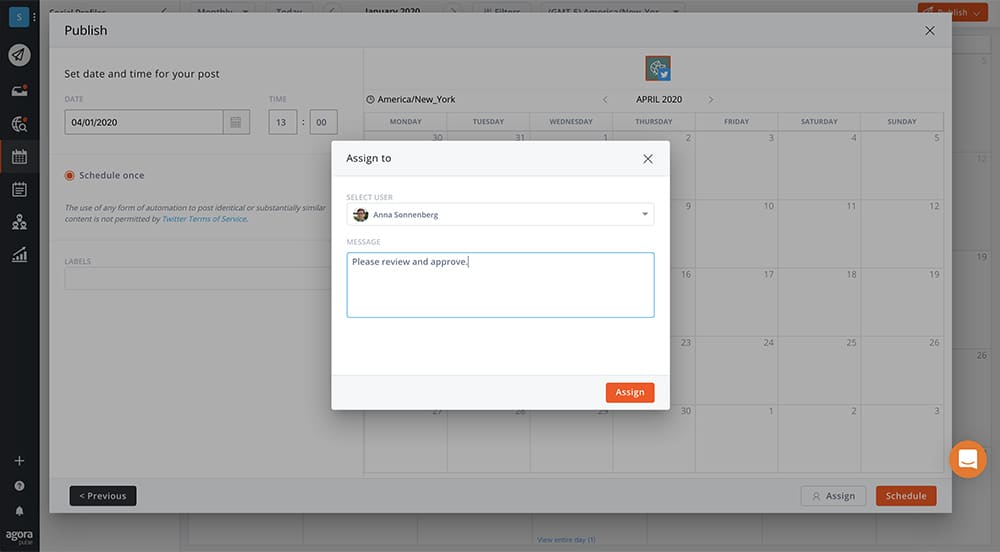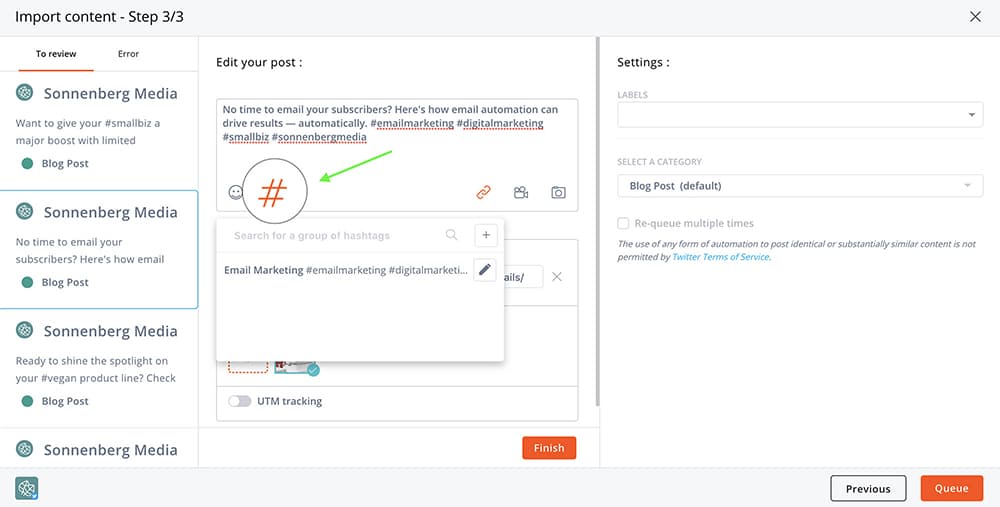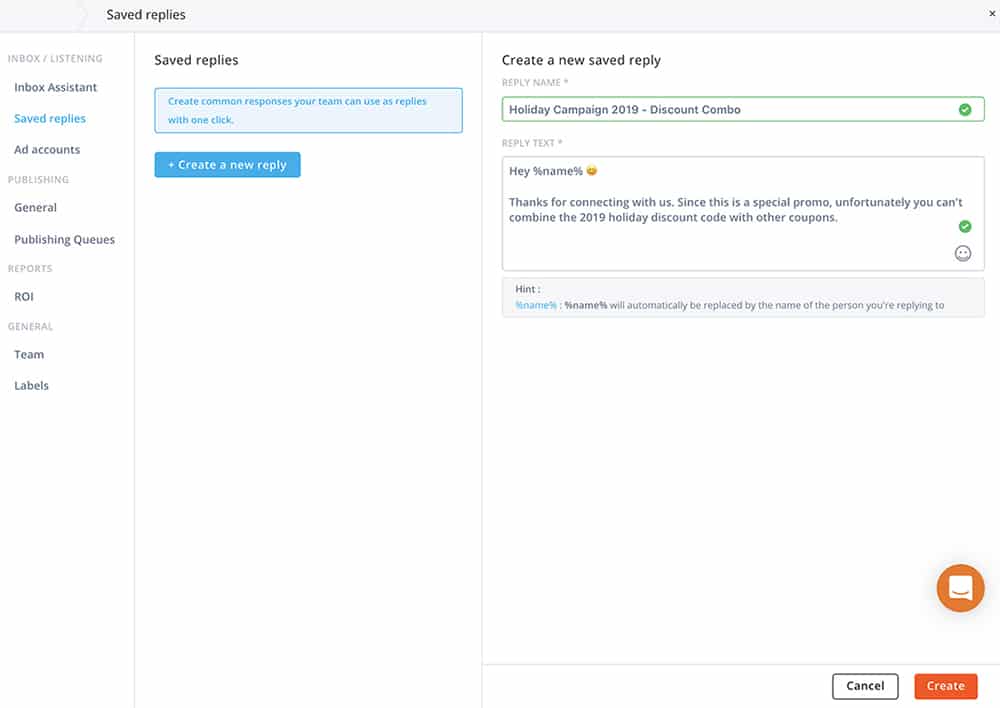You think you portray enthusiasm and energy when you send a flurry of posts. But your followers may have another word to describe what you’re sharing: spam.
As an experienced social media marketer, you’ve seen your fair share of spam. From fake accounts to misleading posts, social media spam creates unnecessary noise that drowns out authentic content and engagement.
Of course, you would never spam your social media followers on purpose. But … what if you’re guilty of accidental spam?
Let’s look at how to identify and stop social media spam, so you can let your brand and its genuine content shine.
1. Quit focusing solely on promotional posts
When you want to get the word out about your brand, it’s easy to go overboard with promotional posts. After all, you want to make sure your followers know about your new products, your special sales, and all the benefits your brand offers. But if you treat your followers like a generic audience that you can sell to, your promotional posts are likely to appear spammy.
Rather than focusing every social media post on promotional purposes, think about how you can add more value. By adding educational blog posts, behind-the-scenes videos, and more to your content calendar, you can show other sides of your brand and make stronger connections to your audience.
Related: Download your FREE social media calendar.
2. Stop creating posts that fall flat
If your team has developed a solid social media strategy, you might want to carry it out to the letter. But what if your audience doesn’t exactly respond the way you’d hoped, and your posts fall flat?
If your brand regularly publishes posts that receive zero—or worse, negative—engagement, your page could look like a spam account if you don’t take action.
Start by identifying the content that doesn’t resonate. Then consider why it’s fallen on deaf ears:
- Does your messaging need work? Review your buyer personas to make sure you’re writing for the right audience.
- Are you posting too much about your brand? Curate outside content that interests your followers for a more balanced mix and to avoid spamming.
- Is your content right for your audience? Poll your followers to find out what topics they want you to cover more often.
3. Rethink your social media queue (and avoid spamming)
If you want to streamline your workflow and boost your productivity, scheduling social media content can be a smart idea. But beware of letting your content calendar become overly automated.
If your page keeps posting scheduled content when a major crisis or a national news event takes over newsfeeds, followers are likely to view your posts as out of touch.
When your followers are focused on an industry shakeup or another major event, take a moment to think about how your brand fits into the conversation. Pause your social media queue to save all that great content for later. Then schedule some timely posts that contribute to the discussion and add value for your followers.
Once the crisis has blown over, you can restart your queue and get back to your regularly scheduled program.
4. Avoid repeating posts endlessly
When your team has devoted time and effort to create high-quality content, you want to make sure your followers see it. There’s nothing wrong with reposting evergreen content—such as informative blog posts or how-to guides—every so often. But if you have a habit of republishing the same posts throughout the day, they’re bound to look like spam.
Instead of setting up content to repost constantly, rethink your social media schedule.
Set evergreen content to republish every couple of months. Then schedule posts highlighting new content to repeat a few times over the course of the month, so you avoid spamming. Consider the rest of your posts to be single-use content.
Check your social media analytics to find the optimal posting times, and publish when your audience is most likely to see and react.
5. Review content for errors and bad links
No matter how careful your team is, minor typos and autocorrect fails can happen to anyone. But if you regularly publish error-filled posts or bad links, your followers may eventually dismiss or ignore your content.
Before you press “publish,” take the time to look over your content. Reread posts so you can correct errors and misinformation, and double-check that all links work correctly.
If you tend to skim over those details, assign someone else to proofread. Then set up an approval process in your social media scheduling tool, so your team can review posts before they go live.
6. Check your tagging habits
If you have fun news to share, like a new product or an upcoming event, you might want to yell about it from the rooftops. After all, you wouldn’t want anyone to miss out. But tagging random industry figures and influencers in each post is a surefire way to get reported for spam.
Before you @ everyone you know—or a bunch of brands you don’t—think about whether the mention is really necessary. Tag away if you’re sharing user-generated content (UGC) from an influencer or a co-branded giveaway with other awesome brands. Skip the mention if the post doesn’t apply specifically to the user or if you’re just randomly tagging fans.
7. Cut out the unnecessary hashtags
When your team publishes content, you want to make sure it reaches the widest audience possible. Adding relevant hashtags to Instagram and Twitter posts can be a great way to increase reach. But when you add irrelevant hashtags or post them on every platform, they add to the clutter and look out of place.
First, remember to remove hashtags from posts that you plan to publish on platforms like Facebook. Then develop a simple strategy for adding hashtags to Twitter and Instagram. Create a hashtag group that includes essential brand hashtags and others that you use frequently. You can use tools like Hashtagify or Keyhole to identify other relevant hashtags — and reach an audience that can truly appreciate your content.
8. Don’t take over posts on other pages
Maybe an influencer you’ve partnered with created a great post featuring your brand. Or perhaps another brand you’re friendly with mentioned you on social media. Of course, you should respond to the post and engage with the comments. But you’ll look like a spammer if you use that as an excuse to fill the page’s other posts with comments about your brand or links to your website.
Rather than overwhelming potential partners with your response—or worse, co-opting their page—take steps to grow relationships naturally. Reciprocate by sharing influencers’ UGC on your brand’s page. Create a post that highlights other brands you’ve partnered with. You’ll build stronger relationships in the process, which could lead to great opportunities to market your brand.
9. Put an end to irrelevant responses
Responding to social media comments quickly can be a boon for your brand. But if your responses are off base or unhelpful, your brand could end up looking like a bot.
If you use saved replies to respond quickly, look them over regularly to avoid spamming. Ask yourself:
- Do they list accurate, up-to-date open hours and addresses?
- Are they personalized and friendly?
- Do they answer questions your customers actually ask?
By routinely reviewing your replies, you can avoid appearing spammy and offer your customers the service they deserve.
In Conclusion
Social media spam can clutter your brand’s message and prevent you from accomplishing your marketing objectives. By keeping social media spam in check, you can focus on posting authentic content, forging genuine connections with followers, and making progress toward key social media goals.
Sign up now for a FREE demo.









